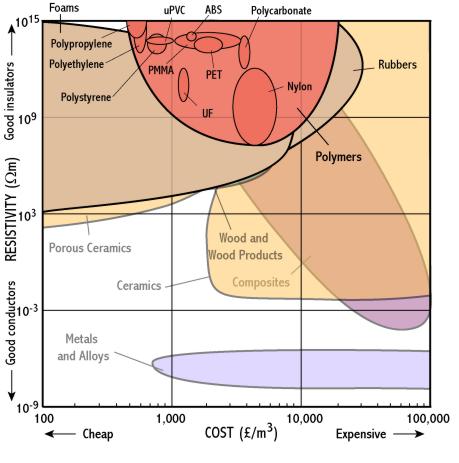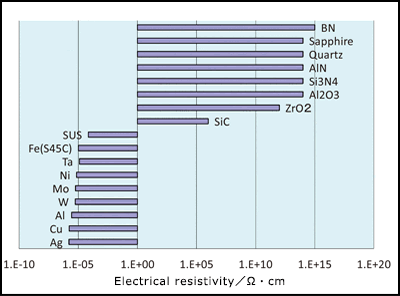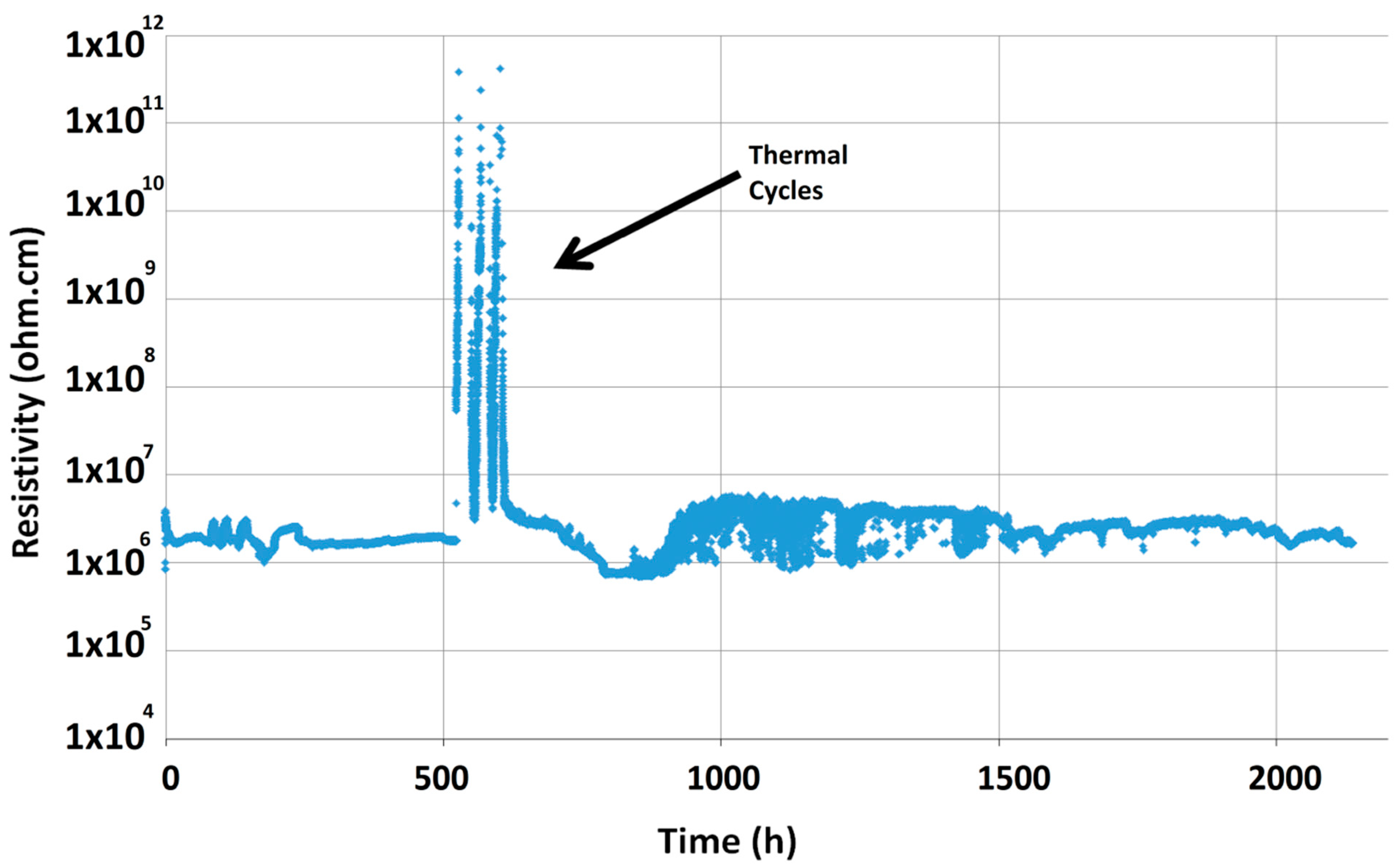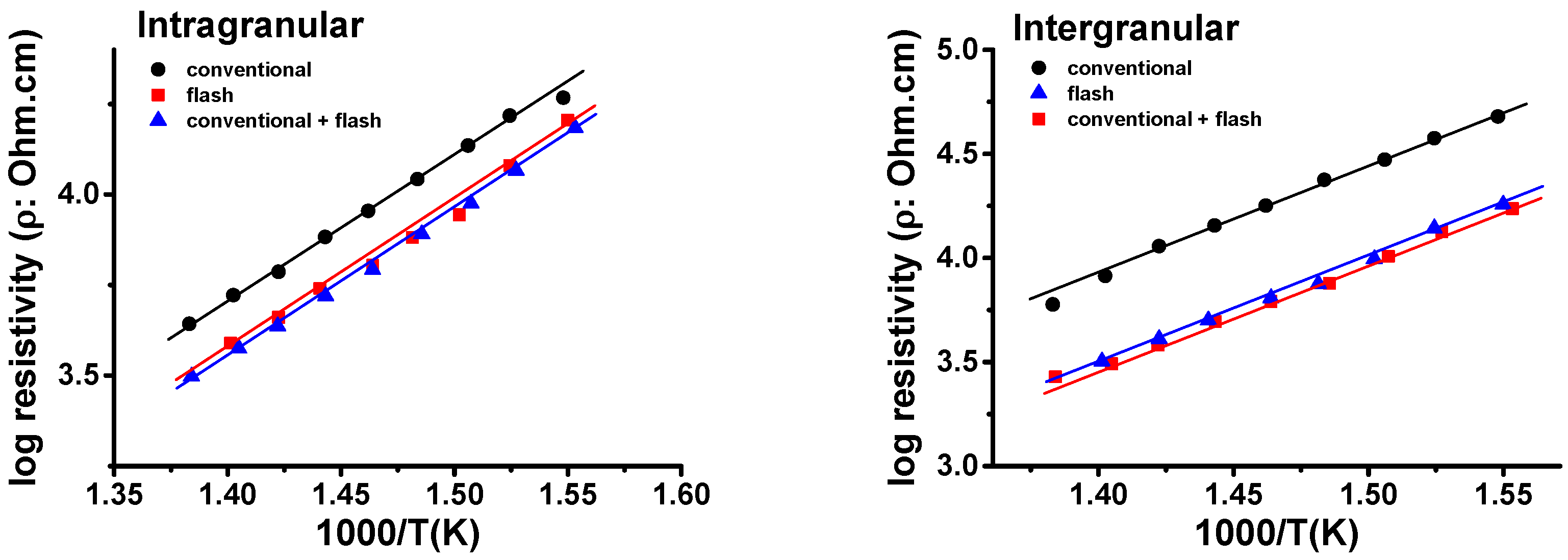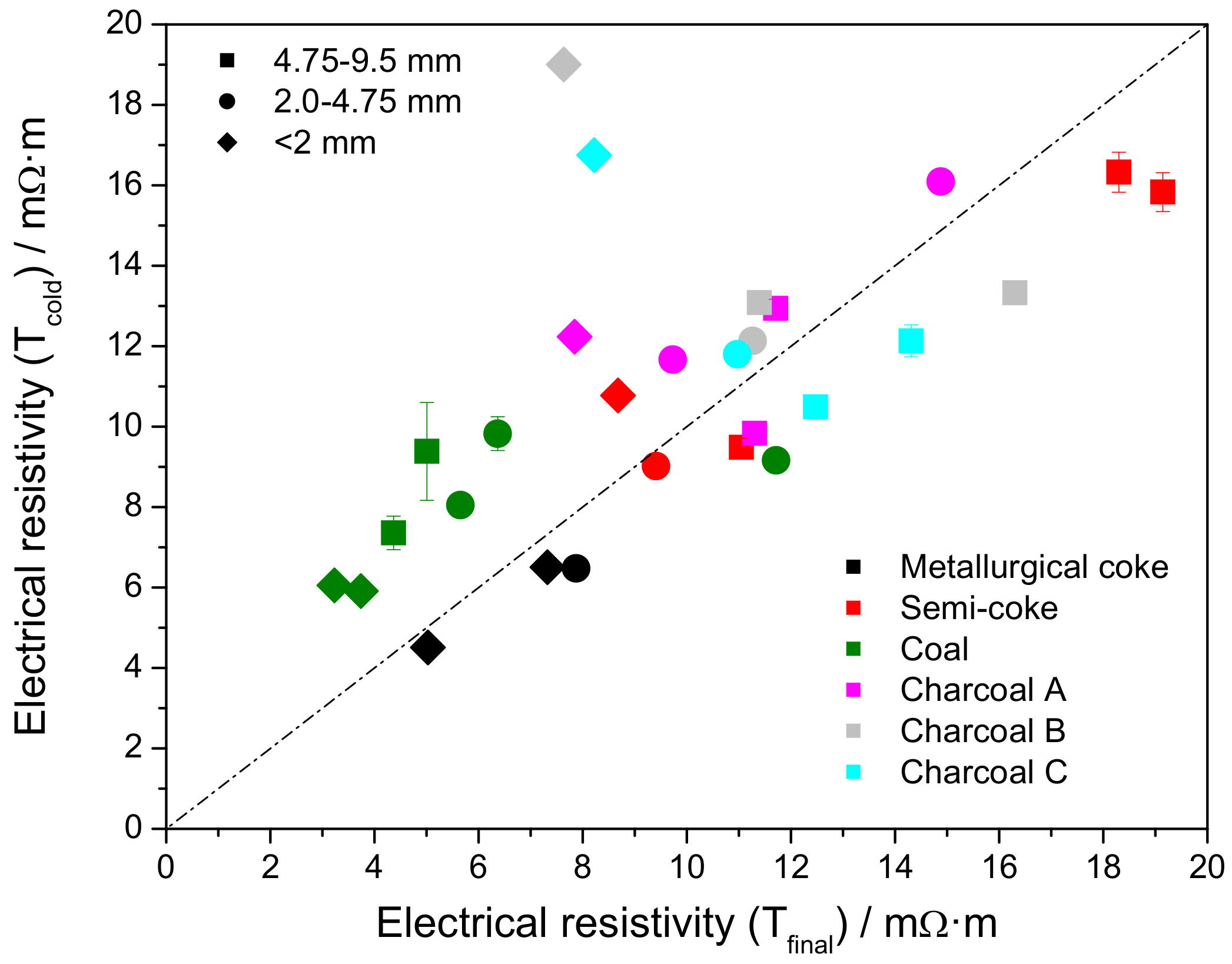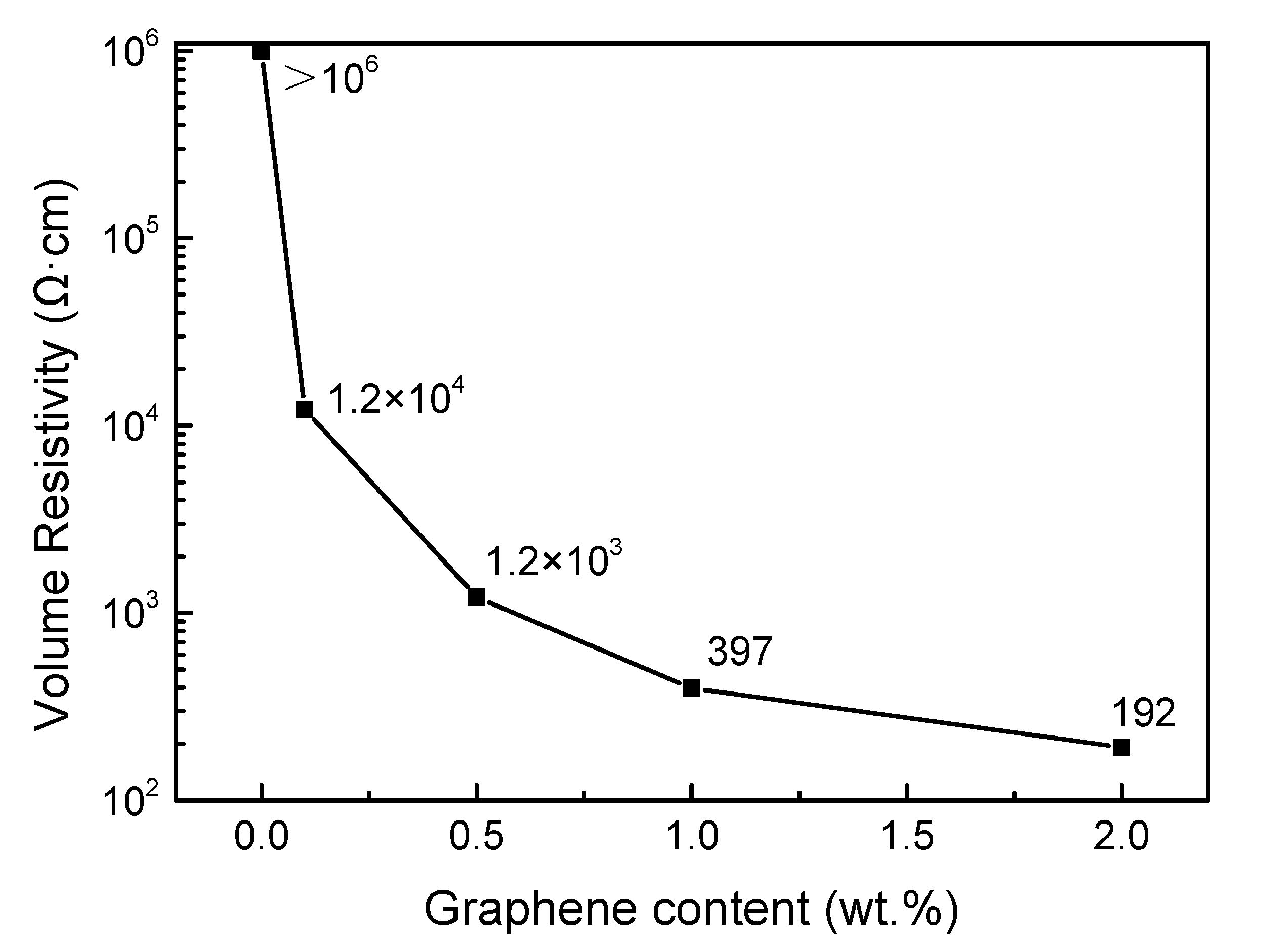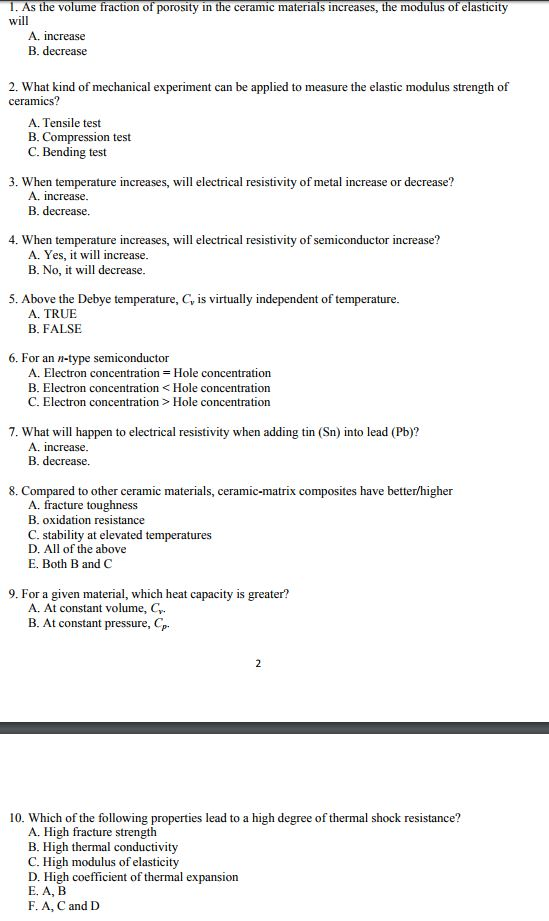In addition to the well known physical properties of ceramic materials hardness compressive strength brittleness there is the property of electric resistivity most ceramics resist the flow of electric current and for this reason ceramic materials such as.
Ceramics electrical resistivity.
Ceramic materials offer a number of benefits in a variety of applications.
On the other hand sic ceramics with added b and al had electrical resistivities of 2 10 and 0 8 cm respectively.
Sic ceramics with added be had an extremely high electrical resistivity of 3 10 12 cm.
Despite of very low electrical conductivity of most of the ceramic materials there are ceramics possessing superconductivity properties near to zero electric resistivity.
Aluminum nitrides aln are used in many.
Alumina 99 9 100 has exceptionally low dielectric loss.
High purity alumina advanced ceramics 94 have the highest resistivity values 1 10 14 followed by aluminium nitride 1 10 12 sintered silicon nitride 1 10 10 and zirconia 1.
The differences in the electrical resistivity of the dense sic ceramics were considered to be due to different solubilities of the.
They provide high wear heat and corrosion resistance as well as high tensile strength volume resistivity dielectric strength and modulus of elasticity.
Aluminas aluminum oxide al 2 o 3 are a commonly used technical ceramic with a range of high performance properties including excellent dielectric behavior.
Alumina 94 97 demonstrates high electrical resistivity and strength and low dielectric loss.


